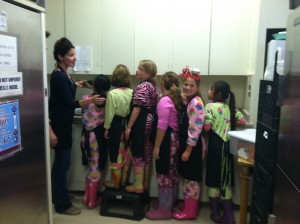

Grains, Meats and Water
DirectionFive is a culinary and nutrition program for kids. We have five programs or directions and one of them is the connection of the Earth’s health to our personal health and how the choices we make on a daily basis affects this connection. Our food system is an integral part of this. When we teach kids about our food system you can practically see the light bulbs go on! We begin my explaining some basic information about the Earth then we discuss this information, so they can make informed decisions.
Interesting statistics:
• Humans have already altered between one-third and one-half of Earth’s non-ice-covered land, much of it for agriculture
• 200 years ago, average topsoil depth was 21 inches on cropland—today it’s 6 inches (according to the United Nations Educational, Scientific and Cultural Organization or UNESCO)
• Approximately 60 percent of the world’s freshwater withdrawals go toward irrigation of crops (UNESCO)
Of the earth’s surface, 72 percent is water, 28 percent land. Of the 28 percent that’s land, 24 percent is inhospitable (mountains, arctic or desert). That means less than four percent of the earth’s total surface area is arable and suitable for growing crops.
• Agriculture accounts for approximately two-thirds of water use worldwide and for 80 percent of water use in the U.S.
• 1000 kg water is used to produce 1 kg of grain
• Only 20 percent of arable (land that can be used for growing crops) land in developing countries is irrigated, but it produces around 40 percent of all crops and close to 60 percent of cereals
• The irrigated area in developing countries is expected to increase by 40 million hectares (2.47 acres) or 20 percent by 2030
At DirectionFive, we teach mostly vegetarian dishes, although we also teach how to roast a chicken, make quiche and if the kids want to understand how to cook a steak properly, we teach them. We do teach kids (then they teach their families) how food choices make a difference and how to vote with their fork.
Did you know?
Meat-based diets consume more grain resources than plant-based diets:
700 kg grain to produce 100 kg of beef
400 kg grain to produce 100 kg of pork
200 kg grain to produce 100 kg of poultry
Meat production is an inefficient use of resources: grain, land and water
Meat production accounts for:
70 percent of all agricultural land
30 percent of the planet’s land surface
40 percent of the world’s grain is grown for livestock feed
60 percent of corn grown in the U.S. is used as animal feed vs. less than 1 percent for direct human consumption as sweet corn (i.e., corn on cob)
Sources: American Farmland Trust; Worldwatch; and National Corn Growers
Livestock and climate change:
• Livestock responsible for 18 percent of greenhouse gas (GHG) emissions. One (dairy or beef) cow can emit between 100 to 200 liters of methane per day. This doesn’t include the methane that continues to be generated through bacterial decomposition in waste storage lagoons. Methane gas is twenty-five more powerful a greenhouse gas than carbon dioxide.
• Greater contribution than transportation
• 37 percent of emissions of methane
• More than 20-times the global warming potential of CO2
• 65 percent of emissions of nitrous oxide
• 286-times the global warming potential of CO2
• Stays in the atmosphere for 114 years
• Nitrogen-based fertilizers are a top source
• 51 percent of U.S. nitrogen is used for fertilizers for animal feed/pasture
At DirectionFive we suggest the consumption of less meat products as part of sustainable resource management— think of the program started in WW II called Meatless Mondays. Just one day a week meat-free will make a difference. We want the kids we teach to one day have a healthier planet on which to raise their kids and every choice we make affects that goal.

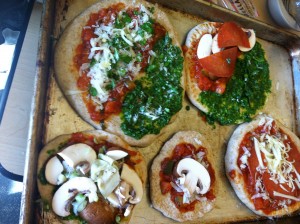 Kids love to make home made Pizza!
Kids love to make home made Pizza! 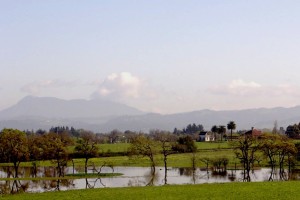
 Here’s the menu:
Here’s the menu: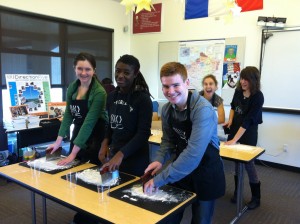
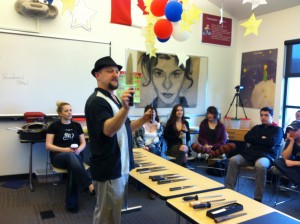
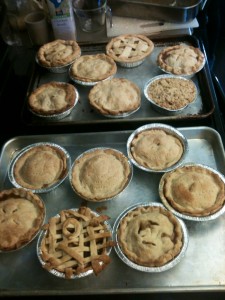
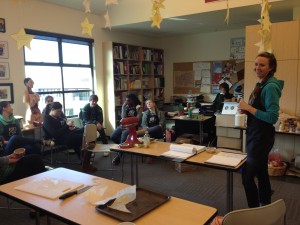
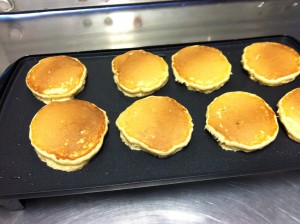
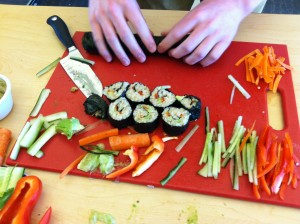
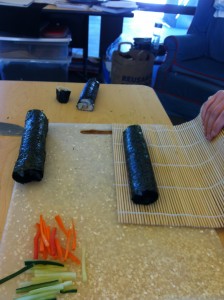
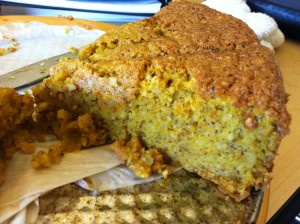
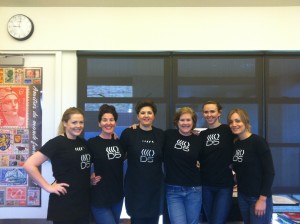
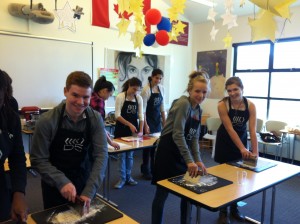
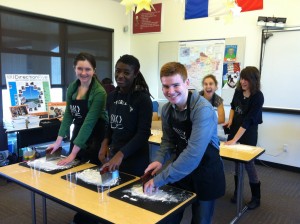

 The first session is for 1-3 grade students and next will be 4-6 grade student. We look forward to meeting new kids!
The first session is for 1-3 grade students and next will be 4-6 grade student. We look forward to meeting new kids!